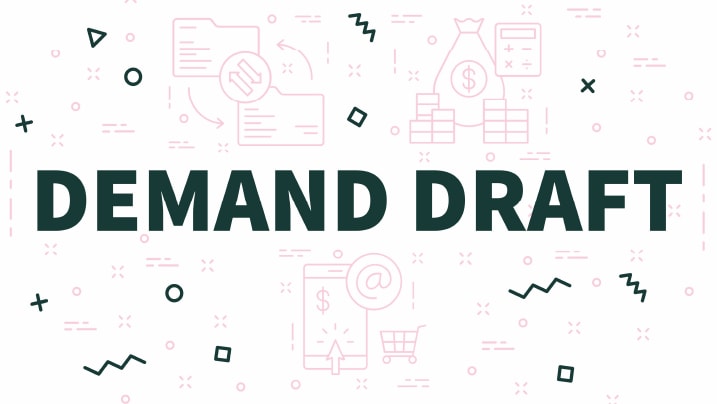CKYC Registry
-
Customer Service Contact us Service request Locate a branch
Find all the help you need
Scan the QR, get our app, and find help on your fingertips

Help CenterSupport topics, Contact us, FAQs and more
-
Login
Are you ready for an upgrade?
Login to the new experience with best features and services
-
Login
Are you ready for an upgrade?
Login to the new experience with best features and services
- Accounts
-
Deposits
IDFC FIRST Bank Deposits
View all Deposits -
Loans
IDFC FIRST Bank Loans
View all Loans - Wealth & Insure
-
Payments
IDFC FIRST Bank Payments
View all Payments -
Cards
IDFC FIRST Bank Cards
View all Cards - Blogs
- Corporate Account
-
Cash Management Services
IDFC FIRST Bank Cash Management Services
View all Cash Management Services - Supply Chain Finance
-
Corporate Lending
IDFC FIRST Bank Lending
View all -
Treasury
IDFC FIRST Bank Treasury
See more details - NBFC Financing
Support topics, Contact us, FAQs and more
- IDFC FIRST Bank Accounts
-
Savings Account
-
Corporate Salary
Account -
Senior Citizens
Savings Account -
First Power
Account -
Current Account
-
NRI Savings
Account -
TASC Institutional
Account -
Savings Account
Interest Calculator
- IDFC FIRST Bank Deposits
-
Fixed Deposit
-
Recurring Deposit
-
NRI Fixed Deposit
-
Safe Deposit Locker
-
FD Calculator
-
RD Calculator
- IDFC FIRST Bank Loans
-
Personal Loan
-
Consumer Durable
Loan -
Home Loan
-
Business Loan
-
Professional Loan
-
Education Loan
-
New Car Loan
-
Pre-owned Car Loan
-
Two Wheeler Loan
-
Pre-owned Two
Wheeler Loan -
Commercial Vehicle
Loan -
Gold Loan
-
Loan Against Property
-
Loan Against Securities
-
Easy Buy EMI card
-
Personal Loan
EMI Calculator -
Education Loan
EMI Calculator -
Home Loan
EMI Calculator
- IDFC FIRST Bank Wealth & Insure
-
FIRST Select
-
FIRST Wealth
-
FIRST Private
-
Mutual Funds
-
Sovereign Gold Bond
-
Demat Account
-
Term Insurance
-
Life Insurance
-
Health Insurance
-
General Insurance
-
Bonds
-
Loan Against
Securities -
Portfolio Management
Service
- IDFC FIRST Bank Payments
-
FASTag
-
Credit Card
Bill Payments -
UPI
-
Funds Transfer
-
Forex Services
-
Pay Loan EMI
- IDFC FIRST Bank Cards
-
Ashva :
Metal Credit Card -
Mayura :
Metal Credit Card -
FIRST Millennia
Credit Card -
FIRST Classic
Credit Card -
FIRST Select
Credit Card -
FIRST Wealth
Credit Card -
FIRST WOW!
Credit Card -
Deals
-
Debit Cards
-
Co-branded Cards
-
Credit Card
EMI Calculator -
FIRST Corporate
Credit Card -
FIRST Purchase
Credit Card -
FIRST Business
Credit Card
- Premium Metal Credit Cards
-
AshvaLifestyle1% Forex₹2,999
-
MayuraLifestyleZero Forex₹5,999
-
FIRST PrivateInvite Only
- Best for travellers
-
MayuraZero ForexMetal₹5,999
-
Ashva1% ForexMetal₹2,999
-
FIRST WOW!Zero ForexTravelLifetime Free
-
FIRST SWYPTravel OffersEMI₹499
-
FIRST Select1.99% ForexLifestyleLifetime Free
-
FIRST Wealth1.5% ForexLifestyleLifetime Free
-
Club VistaraTravelLifestyle₹4,999
-
IndiGo IDFC FIRST Dual Credit CardTravelLifestyle₹4,999
- Max benefits, Free for life
-
FIRST Classic10X RewardsShoppingNever Expiring Rewards
-
FIRST Millennia10X RewardsShoppingNever Expiring Rewards
-
FIRST Select10X RewardsLifestyle1.99% Forex
-
FIRST Wealth10X RewardsLifestyle1.5% Forex
-
FIRST WOW!RewardsTravelZero Forex
-
LIC ClassicRewardsInsuranceShopping
-
LIC SelectRewardsInsuranceShopping
- Reward Multipliers
-
AshvaLifestyleMetal₹2,999
-
MayuraLifestyleZero Forex₹5,999
-
FIRST ClassicNever Expiring RewardsShoppingLifetime Free
-
FIRST MillenniaNever Expiring RewardsShoppingLifetime Free
-
FIRST SelectNever Expiring RewardsLifestyleLifetime Free
-
FIRST WealthNever Expiring RewardsLifestyleLifetime Free
- Rewards & Credit on UPI
-
FIRST Power+FuelUPI₹499
-
FIRST PowerFuelUPI₹199
-
FIRST EA₹NVirtual1% Cashback₹499
-
FIRST DigitalVirtualUPI₹199
-
IndiGo IDFC FIRST Dual Credit CardUPITravelDual cards
- Fuel and Savings
-
FIRST PowerRewardsUPI₹199
-
FIRST Power+RewardsUPI₹499
-
LIC ClassicRewardsInsuranceShopping
-
LIC SelectRewardsInsuranceShopping
- Express and Flaunt
-
AshvaMetal1% Forex₹2,999
-
MayuraMetalZero Forex₹5,999
-
FIRST SWYPEMIOfferMAX₹499
-
FIRST MillenniaRewardsShoppingLifetime Free
- FD Backed rewarding Credit Cards for all
-
FIRST EA₹NVirtualCashback₹499
-
FIRST WOW!Zero ForexTravelLifetime Free
-
CreditPro Balance TransferTransfer & SaveReduce InterestPay Smartly
- IDFC FIRST Bank NRI Forex Solutions
-
Send money to India-Wire transfer
-
Send money to India-Digitally
-
Send money abroad
-
Max Returns FD (INR)
- IDFC FIRST Bank MSME Accounts
-
Platinum Current
Account -
Gold
Current Account -
Silver Plus
Current Account -
Merchant Multiplier
Account -
Agri Multiplier
Account -
TASC Institutional
Account -
Dynamic Current
Account -
World business
Account -
First Startup
Current Account
- IDFC FIRST Bank Business Loans
-
Business Loan
-
Professional Loan
-
Loan Against Property
-
Business Loan for Women
-
Working Capital Loan
-
Construction Equipment Loan
-
Machinery Loan
-
Healthcare Equipment Loan
- IDFC FIRST Bank Business Solutions
-
Payment Solutions
-
Tax Payments
-
Doorstep Banking
-
Point of Sale (POS)
-
Escrow Accounts
-
NACH
-
Payment Gateway
-
UPI
-
Virtual Accounts
-
As per amendment in the Income Tax Rules, PAN or Aadhaar are to be mandatorily quoted for cash deposit or withdrawal aggregating to Rupees twenty lakhs or more in a FY. Please update your PAN or Aadhaar. Kindly reach out to the Bank’s contact center on 1800 10 888 or visit the nearest IDFC FIRST Bank branch for further queries.
-
-
Most Searched
Sorry!
We couldn’t find ‘’ in our website
Here is what you can do :
- Try checking the spelling and search
- Search from below suggestions instead
- Widen your search & try a more generic keyword
Suggested
Get a Credit Card
Enjoy Zero Charges on All Commonly Used Savings Account Services
Open Account Now
Savings Account
What is a Demand Draft (DD)? Full form, meaning & types
Key Takeaways
A demand draft is a negotiable instrument to transfer funds from one bank to another. Individuals need to request his/her bank to issue a demand draft in the recipient’s name to transfer the amount.
A Demand Draft is a pre-paid fund transfer instrument, where the payment is already collected when issuing a demand draft, therefore a demand draft does not 'bounce' due to insufficient funds.
The payer’s and payee’s details are mentioned on the demand draft, and the demand draft can only be encashed at the mentioned site, upon receipt, and without any further verification or signature to initiate the payment.
A demand draft (DD) is a trusted financial instrument used to make secure payments in situations where cash, cheque, or online transfers may not be suitable. Whether you’re making a large payment to a supplier, paying college fees, or sending money across cities, a DD ensures that your payment is guaranteed by the issuing bank. This makes it an ideal choice in cases where payment security and reliability are critical.
With IDFC FIRST Bank's advanced digital and in-branch services, obtaining a demand draft is seamless. If you hold a savings account with the bank, opting for a demand draft comes with added benefits such as zero fees on DD issuance, as well as zero-fee banking on all common savings account services and reliable banking services. This makes it a preferred choice for both individuals and businesses.
READ MORE
What is a Demand Draft?
A demand draft (DD) is a prepaid negotiable instrument issued by a bank, guaranteeing payment to the beneficiary. It is drawn by one bank branch on another and can be used to transfer funds across cities or states. Unlike cheques, a DD cannot bounce due to insufficient funds as the amount is prepaid by the issuer. This feature makes it a safe and reliable payment option.
Demand drafts don’t bounce due to insufficient funds because they are pre-paid negotiable instruments.
How does a demand draft work?
A demand draft operates on the principle of prepaid funds. When you request a DD, the bank debits the specified amount from your account (or you pay in cash) and issues the draft. This DD can then be handed over to the beneficiary, who can deposit it into their bank account.
Here’s how it works in steps:
- Application: The drawer (you) fills out a demand draft application form at the bank or through online banking, specifying details like the beneficiary’s name, amount, and location.
- Issuance: The bank verifies the details, debits the amount along with applicable charges, and issues the DD.
- Delivery: The DD is physically delivered to the beneficiary.
- Encashment: The beneficiary deposits the DD at their bank, which collects the amount from the issuing bank, completing the transaction.
When utilizing banking services like demand drafts, it's essential to consider any associated fees. While there may be charges based on the transaction amount, some banks offer incentives such as rebates for account holders.
For instance, IDFC FIRST Bank savings accountholders enjoy zero-fee banking on all common account services including issuance of DD, debit card, chequebook, unlimited ATM withdrawals, SMS alerts and lot more. Additionally, account holders can benefit from competitive interest rates with monthly interest payouts, ensuring a rewarding banking experience.
It's important to adhere to the bank's terms and conditions regarding the use of these services, as misuse may result in applicable fees in line with industry standards.
Types of demand drafts (DD)
There are two main types of demand drafts, catering to varied financial needs:
- Sight demand draft: This type of DD is payable immediately upon presentation to the bank. It is commonly used for time-sensitive payments like fees or bills.
- Time demand draft: A time DD is payable only after a specific period. It is often used in business transactions where a deferred payment is required.
How to get a demand draft?
Obtaining a demand draft from IDFC FIRST Bank is a simple and straightforward process. Follow these steps:
- Visit the branch or log in online: Head to your nearest IDFC FIRST Bank branch or log in to your online banking account through net banking or mobile banking.
- Fill the application form: Provide details such as the beneficiary’s name, amount, and location.
- Submit payment: The amount to be transferred will be deducted from your savings account. Alternatively, you can pay in cash.
- Receive the DD: Once the payment is processed, the bank issues the demand draft. You can collect it immediately or request delivery, depending on the service options available.
With IDFC FIRST Bank, you can enjoy hassle-free demand draft services. Additionally, having a savings account with the bank often entitles you to free DD issuance, making it a cost-effective option.
Advantages and limitations of using a demand draft
Advantages |
Limitations |
Guaranteed payment as it is prepaid by the issuing bank. |
Involves issuance charges that vary based on the amount and bank policies. |
Secure method of transferring money without the risk of bouncing. |
Requires a physical visit to the bank unless online issuance is available. |
Accepted across locations, making it suitable for inter-city transactions. |
Time-consuming compared to instant online transfers like NEFT or IMPS. |
Suitable for situations where digital payments are not feasible or accepted. |
Encashment delays can occur if the beneficiary’s bank takes time to process the DD. |
Conclusion
Demand drafts remain a reliable payment method in scenarios requiring security and guaranteed funds. Their flexibility and widespread acceptance make them invaluable, especially for large or inter-city transactions. With nationwide network and comprehensive online banking services, IDFC FIRST Bank can be your go-to solution for everyday banking needs such as obtaining a DD for yourself or your business. Opening an IDFC FIRST Bank Savings Account today enables you to enjoy seamless banking, free DD issuance, and other benefits tailored to your financial needs.
Frequently Asked Questions
How long is a demand draft valid?
A demand draft is valid for three months from the date of issuance. After this period, it becomes invalid and must be revalidated by the issuing bank.
Can a DD be cancelled?
Yes, a demand draft can be cancelled if it has not been encashed. You need to visit the issuing branch with the original DD and apply for cancellation. Applicable charges may be deducted.
What to do if a DD is lost?
In case of a lost DD, immediately notify the issuing bank. You’ll need to provide details such as the DD number, amount, and beneficiary’s name. The bank may issue a duplicate DD after verifying the claim and charging a nominal fee.
Disclaimer
The contents of this article/infographic/picture/video are meant solely for information purposes. The contents are generic in nature and for informational purposes only. It is not a substitute for specific advice in your own circumstances. The information is subject to updation, completion, revision, verification and amendment and the same may change materially. The information is not intended for distribution or use by any person in any jurisdiction where such distribution or use would be contrary to law or regulation or would subject IDFC FIRST Bank or its affiliates to any licensing or registration requirements. IDFC FIRST Bank shall not be responsible for any direct/indirect loss or liability incurred by the reader for taking any financial decisions based on the contents and information mentioned. Please consult your financial advisor before making any financial decision.
The features, benefits and offers mentioned in the article are applicable as on the day of publication of this blog and is subject to change without notice. The contents herein are also subject to other product specific terms and conditions and any third party terms and conditions, as applicable. Please refer our website www.idfcfirstbank.com for latest updates.























